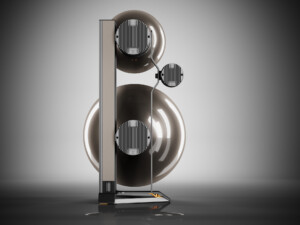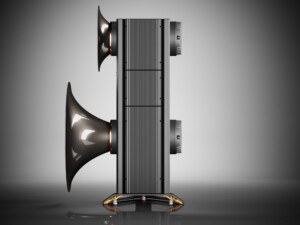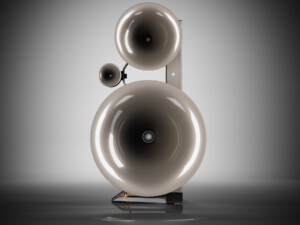It’s that absolute temporal and spatial security that allows the speakers to be so rhythmically articulate, to shift pace, accent and density with such uninhibited ease; the smaller the scale of the recording, the more apparent the freedom from constraint. Again staying within the classical canon, rather than reaching for something more obvious, try the Shostokovich String Quartet No.11 in F Minor, Op.122 (The Fitzwilliam String Quartet, L’Oiseau-Lyre DSLO 28). The Trios hold the different instruments separate – in space, tonally and in terms of texture. The different and sharply contrasting parts are kept perfectly in balance, maintaining the rhythmic tension, pace and (where appropriate) the explosive dynamic contrasts and shifts in musical energy. But what is perhaps most impressive is the way that the system maintains the central role of the viola, so often a forgotten element or bit part player. Here, the instrument is central to the structure as a whole, very much (and unmistakably) the core around which all else happens. It’s a balance that heightens the drama and impact of the more flamboyant violin and cello parts, one that’s central to the music. This dramatic tension, this expressive cut and thrust is what makes string quartets, especially later string quartets, so fascinating live and so difficult for systems to emulate. Yet the Trios capture that quality effortlessly, their presentation full of the dynamic tension and drama, colour and texture that most other systems compress.
So far, I’ve only used musical examples that are both classical and acoustic. Does that make the Trios a ‘classical speaker’? The answer to that is an emphatic “No”. Indeed, listeners familiar with the original Trios might well be bemused by the proposition, given the speakers’ attack, dynamics and low-frequency qualities, attributes that really come to the fore with rock and pop. But what the classical recordings reveal (or at least reveal more clearly) is the extent to which the Trio G3’s overall integration, coherence and subtlety have improved over the previous models, elevating the speaker to a completely different performance level, keeping it more than competitive with conventional speakers at anything near its price. With more bandwidth and considerably more headroom, it also manages to match those speakers in terms of colouration levels while challenging their harmonic and textural capabilities. Far from being confined to classical recordings, those benefits are just as relevant to pop, rock and jazz.
Play a track like ‘Games Without Frontiers’ (from Peter Gabriel’s third solo album, RealWorld PGLP03) and the almost clock-like precision of the rhythms and parts is explicitly stated, the metronomic quality almost hypnotically fascinating, while the different layers of the complex ‘Biko’ are both distinct and compellingly coherent. The addictive hooks and ear-worms that Birdy seems to generate so effortlessly (Young Heart, A&M Atlantic 0190295089603) work their magic with an almost indolent ease, her central piano and distinctive vocal phrasing both benefitting from the speaker’s easy rhythmic articulation and sense of not-to-note spacing. This intelligent, carefully crafted pop thrives on the expressive range and absolute separation and stability generated by the Trios. The huge, synthetic soundfields extend waaay back beyond the rear wall, the incidental birdcalls and other noises that populate them, the elongated bass drone that underpins the music are reproduced with a clarity that at once reveals them and makes them an integral part of the whole.




